Ear Piercings: Types, Chart, Cost, Pain, And Healing
Express your unique personality with an ear piercing that speaks volumes without a word.
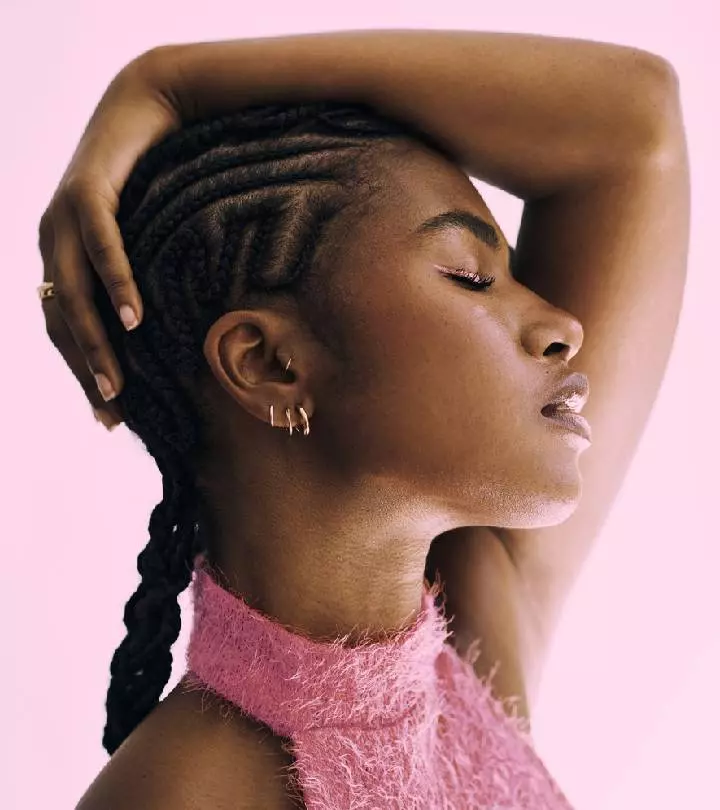
Image: iStock
Ear piercings are wildly popular today as a form of self-expression and have become a fashion statement. While the earlobe and the cartilage are common piercing sites, nowadays you can experiment with versatile placements and piercings to match your vibe. This diversity allows for experimentation with a wide range of styles and jewelry options available. From simple lobe piercings to more intricate cartilage piercings, each type of piercing offers a unique aesthetic. So, if you are ready to go beyond the usual and get your ears embellished, this article is your holy grail. Whether you are a beginner or a seasoned enthusiast, it aims to provide valuable insights to help you navigate the world of ear piercings with confidence. Scroll down to keep learning!

 Piercing Guide: Ear Piercing
Piercing Guide: Ear Piercing- Placement: Anywhere on the ear, including the lobe and cartilage
- Best Jewelry: Studs, hoops, CBRs, barbells, or labrets
- Cost: $20 to $70
- Pain Level: Medium
- Healing Time: About 4 to 12 months
In This Article
Who Can Get An Ear Piercing?
Ear piercing is suitable for people of all ages, including children (with parental consent). As long as individuals are healthy and follow aftercare instructions, they can get their ears pierced. However, it is important to choose a trusted and experienced piercer as well as maintain good hygiene to ensure a safe and successful piercing experience.
 Did You Know?
Did You Know?Once you decide to get an ear piercing, exploring various types of ear piercings to make your choice can be an exciting next step. The next section takes you through them.
Key Takeaways
- Ear piercings offer a versatile form of self-expression and fashion, with a wide range of styles, placements, and jewelry options available.
- It is crucial to prioritize safety by choosing reputable piercers, following proper aftercare procedures, and being aware of potential risks such as infection or allergic reactions.
- Healing time varies depending on the type of piercing, with earlobe piercings typically healing faster than cartilage piercings.
Ear Piercing Chart
View this post on Instagram
Ear piercings offer countless possibilities, with over ten different locations on the ear to choose from. From simple lobe piercings to more complex cartilage placements, there is something for everyone. Check out our comprehensive list below.
Types Of Ear Piercings
Ear piercings offer endless ways to showcase your style and personality. Some of them are mentioned below.
- Standard Lobe
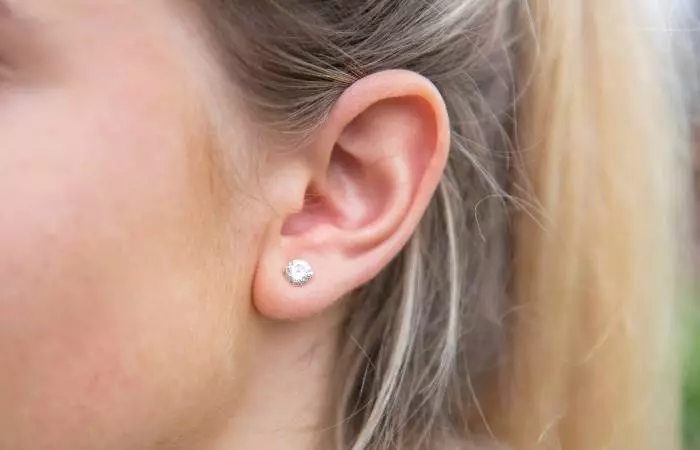
Situated at the center of the earlobe, this classic piercing is a timeless favorite. It provides a perfect canvas for displaying a variety of stylish studs and hoops, making it a versatile choice for both casual and formal occasions.
- Daith
View this post on Instagram
It is nestled in the innermost fold of the cartilage. It is known not just for its aesthetic but also for its potential to alleviate migraines, making it a popular choice for those seeking both style and potential therapeutic benefits (1). However, medical evidence regarding its efficacy for migraine is lacking.
- Helix

This piercing involves placing jewelry through the upper cartilage of the ear, typically along the outer rim. Whether opting for a single piercing or multiple helix piercings, it offers a fashionable way to enhance the ear’s appearance.
- Forward Helix
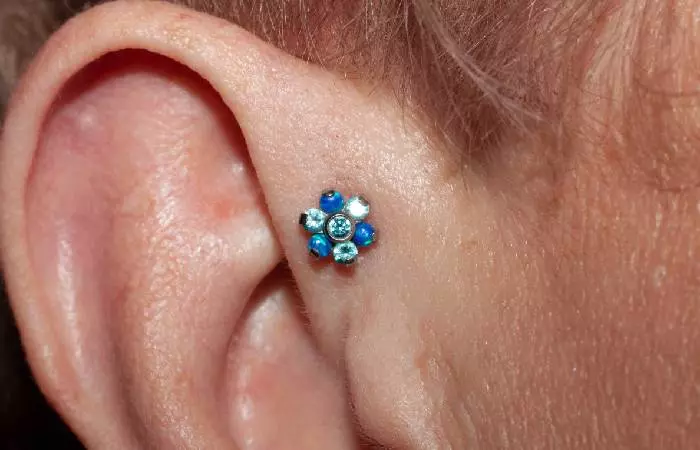
Positioned at the front of the upper ear cartilage, it adds a touch of uniqueness to the ear. Its placement is eye-catching, which sets it apart from other ear piercings.
- Tragus
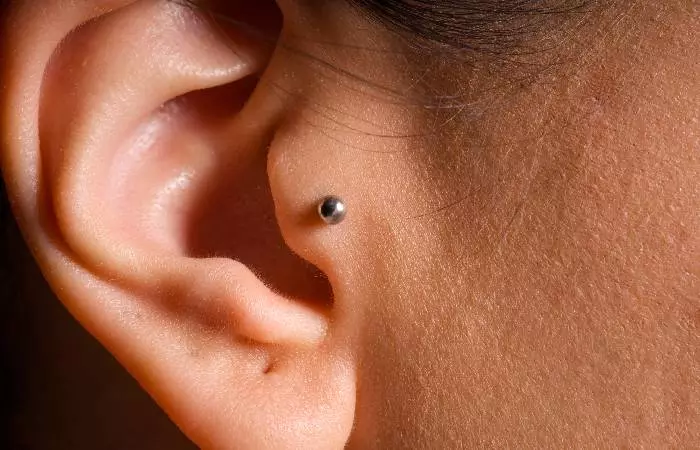
Located on the small flap of cartilage that protrudes in front of the ear canal, the tragus piercing enhances the intricate details of the ear and is perfect for showcasing studs and hoops.
- Anti-Tragus
View this post on Instagram
Situated opposite the tragus, above the earlobe, the anti-tragus piercing makes for a distinctive addition to ear adornments. Its placement provides balance and symmetry to the ear if you have a tragus piercing.
- Conch

Residing in the middle portion of the ear cartilage, it is a versatile location where you can wear studs, doubles, or cuffs. Its central placement on the ear makes it a popular choice for those who seek unique ear adornments.
- Inner-Conch
View this post on Instagram
This piercing is done through the thick middle shell of the ear. Its placement allows one to choose from various types of jewelry to create a sophisticated aesthetic.
- Outer-Conch
View this post on Instagram
Positioned on the outer part of the conch, this piercing offers a harmonious balance of style and comfort.
- Industrial
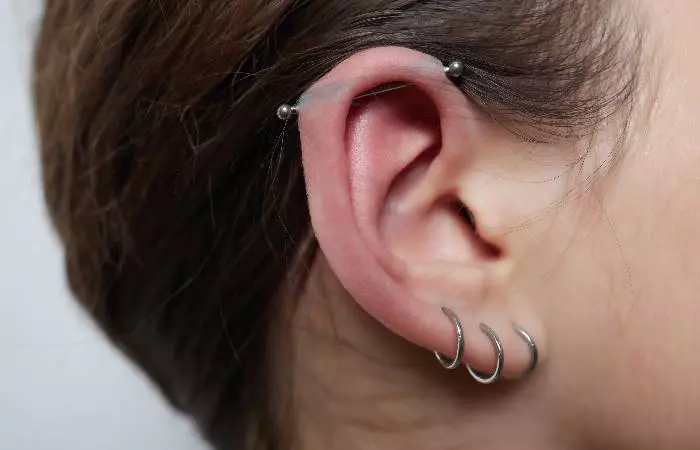
An industrial piercing is a bold choice that connects two points of the upper ear with a single barbell. This piercing creates a striking and edgy aesthetic. However, not everyone can have this piercing. If the ear doesn’t have the right shape or enough cartilage in the upper ear area, the piercing may not heal properly, might cause discomfort, or simply may not work at all.
- High-Lobe

Positioned a little higher up on the earlobe than a traditional lobe piercing which is typically done at the center. It offers a modern twist to the classic lobe piercing.
- Rook

A rook piercing is situated at the inner ridge of the upper ear, which adds dimension to the ear’s inner landscape. It is a stylish choice that offers a distinctive look.
- Auricle/Mid-Helix

This one is also known as a mid-helix piercing and is placed along the midsection of the ear’s outer rim. An auricle piercing serves as a halfway point for stylish hoops or studs.
- Snug
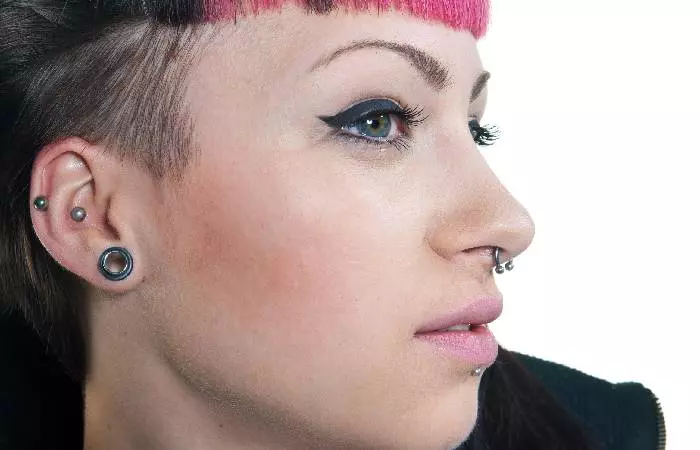
A snug piercing is made horizontally through the inner rim of the cartilage. It snugly hugs the ear to create a sleek and subtle accent.
- Orbital
View this post on Instagram
An orbital piercing connects two piercings with a ring. It could be placed in the lobe or cartilage. The definitive feature of this type of piercing is that it creates an orbit around the ear.
- Stacked Lobe
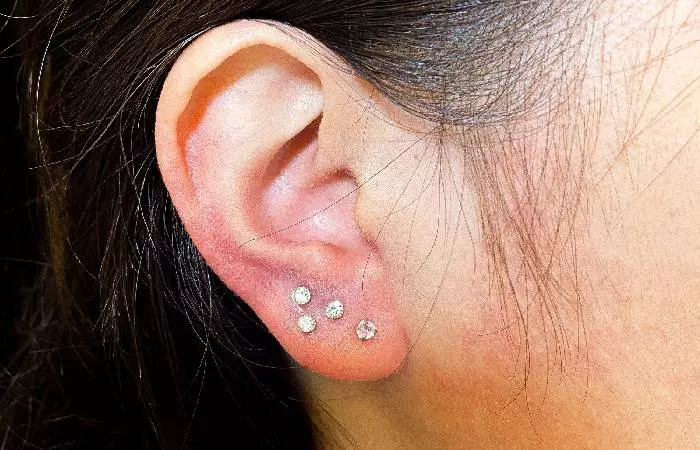
It is pierced directly above the traditional lobe. This style creates a trendy and dynamic look by stacking various types of earrings together.
 Trivia
TriviaSara, a YouTuber, shared her experience with ear piercings in a detailed video. In the video, she described her journey of getting multiple piercings on her ear, including her lobes, helix, tragus, flat, conch, and daith piercings. She said, “Getting piercings has been a huge step in increasing my confidence. Now, instead of hiding my ears, I can embrace them and use them as a canvas. This is basically a form of expression and a form of art for me (i).”
Once you decide on the location of the piercing, you have to decide whether to opt for a piercing needle or piercing gun for the procedure. Scroll down to know which option is safer.
Which Is Safer – A Piercing Gun Or A Needle?
The safety of piercing methods, whether using a piercing gun or a needle, is a topic of debate within the professional piercing community.
Piercing needles are hollow with a sharp tip and are typically considered safer because they create a clean opening without excessive trauma to the skin (2). One of the advantages of piercing needles is that they do not come into contact with the jewelry, which reduces the risk of contamination. However, the process involves direct needle handling, which may introduce a slight risk of infection if proper hygiene practices are not followed.
On the other hand, piercing guns use a spring-loaded mechanism to force a stud earring through the skin quickly. While piercing guns offer speed and convenience, they have been criticized for several reasons. One concern is that piercing guns cannot be fully sterilized between uses, which increases the risk of contamination. In addition, the forceful nature of the piercing gun can cause more trauma to the tissue compared to a needle and may lead to complications such as excessive bleeding or bruising (2).
When comparing the safety of piercing guns versus needles, it ultimately comes down to proper technique and hygiene practices. It is important for individuals considering a piercing to research their options carefully and choose a reputable piercer who prioritizes safety and hygiene.
Once you finalize the method you prefer, you might wonder whether or not ear piercings hurt and to what extent. The next section informs you about that.
Do Ear Piercings Hurt?
The level of pain experienced during an ear piercing can vary depending on individual pain tolerance and the specific location of the piercing. In general, earlobe piercings tend to be less painful compared to cartilage piercings. Some may feel a pinch or slight pressure during the piercing procedure, while others may find the experience more painful. However, the pain is typically brief and lasts only a few seconds. However, following proper aftercare methods is essential to ensure a smooth and successful healing experience.
While the pain experienced during an ear piercing is often brief and tolerable, understanding the healing process is essential. Let us discuss how long it takes for ear piercings to heal in the next section.
How Long Do Ear Piercings Take To Heal?
The healing time for ear piercings can vary depending on factors such as the specific location of the piercing, individual healing ability, and how well aftercare instructions are followed. A general estimate would look like the following.
Earlobe piercings take about 6 to 8 weeks to heal completely.
Cartilage piercings can take longer to heal, typically ranging from 4 months to 1 year.
If you experience any unusual pain, swelling, or discharge during the healing process, it is important to consult with a healthcare professional or your piercer.
It is essential to continue proper aftercare during the entire healing period to prevent infection and promote healing. In the next section, we discuss the aftercare routine in detail.
Ear Piercing Aftercare
Aftercare is crucial for any kind of piercing to ensure it heals properly and reduce the risk of infection or irritation. Here is what you need to know.
- Avoid touching, twisting, or turning the new jewelry in a fresh piercing as it may irritate the area and prolong the healing process.
- Refrain from sleeping on the ear that has a fresh piercing to prevent unnecessary pressure and irritation (3).
- Avoid swimming in pools, hot tubs, or natural bodies of water until your piercing is fully healed to prevent exposing it to contaminants. Water harbors bacteria which increases the risk of infection (3).
- Be cautious about using hair care products, makeup, or skin care products on or around your new piercings as they may cause irritation (3).
- Be cautious about using hair care products, makeup, or skin care products on or around your new piercings as they may introduce bacteria and may increase the risk of infection (3).
- Keep an eye out for any signs of infection, including excessive redness, swelling, pain, or discharge. If you notice any of these symptoms, consult with your piercer or a healthcare professional (4).
By following these aftercare guidelines diligently, you can help ensure a smooth healing process. Scroll down to learn how to clean ear piercings to keep them looking healthy.
How To Clean Ear Piercings
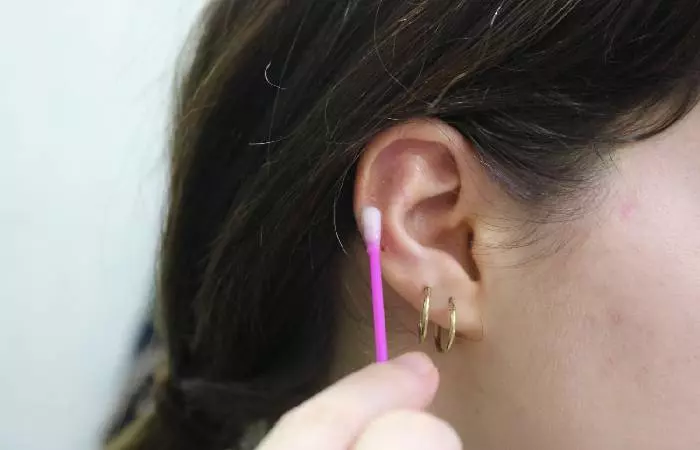
- Cleaning an ear piercing is important for preventing infection and promoting healing. Here are some tips you can follow.
- Wash your hands thoroughly with soap and water before touching your piercing.
- Clean your piercing at least twice a day. Use a saline solution and warm water to clean it (1).
- Dry the area with a clean paper towel or let it air dry. Avoid using towels as they may harbor bacteria (1).
- Use a clean cotton swab or pad to gently remove any crust or discharge from the piercing site.
Proper aftercare and cleanliness go a long way in ensuring your piercing is healthy. However, some risks and side effects still remain. Check out the next section to find out what they are.
Risks And Side Effects Of Ear Piercings
Ear piercing is generally safe when performed by a professional in a clean and sterile environment. However, like any invasive procedure, there are potential risks and side effects to be aware of. Here are some of them.
- Infection
One of the most common risks associated with ear piercing is infection. Common symptoms of infection include redness, swelling, pain, and discharge. If left untreated, an infection can spread and become more serious (4). - Allergic Reactions
Some people may experience allergic reactions to the metals used in earrings, particularly nickel (5). This can cause itching, redness, and swelling around the piercing site. - Keloids
Keloids are raised scars that can form at the site of a piercing. If you or your family have a history of keloids, there is a higher chance of developing them after ear piercing (6). - Tearing Or Stretching
If earrings are pulled or caught on clothing, they can cause tearing or stretching of the earlobe. This can be painful (3). - Scarring
While some scarring is normal after a piercing, excessive scarring or hypertrophic scarring can occur, particularly if the piercing is not properly cared for.
In order to minimize the risks associated with ear piercing, it is essential to choose a reputable piercer who follows strict hygiene practices, uses hypoallergenic jewelry, and carefully follows aftercare instructions. In the next section, we explore how to find a skilled piercer to ensure a smooth and successful piercing experience.
Tips To Find A Good Piercer
Here are some tips to help you find a skilled piercer for your ear piercing.
- Look for places with good reviews, a clean and professional environment, and experienced piercers.
- Make sure the piercer is licensed and certified. Piercers are required to have specific training and certifications to ensure they meet health and safety standards.
- Take a trip to the studio before getting pierced. Pay attention to cleanliness, organization, and overall professionalism. A reputable studio will have proper sterilization procedures and a welcoming atmosphere.
- Do not hesitate to ask the piercer questions about their experience, sterilization techniques, jewelry quality, and aftercare instructions.
- Request to see the piercer’s portfolio of previous work. Look for clean and well-executed piercings that demonstrate their skill and expertise.
By following these tips, you can increase your chances of finding a skilled and trustworthy piercer who prioritizes your safety and satisfaction. Before making your final decision on an ear piercer, keep reading to find out whether it will burn a hole in your pocket.
How Much Does An Ear Piercing Cost?
The cost of an ear piercing can vary depending on several factors, including the location of the piercing, the type of jewelry chosen, the expertise of the piercer, and the region where the piercing studio is located.
On average, basic earlobe piercings typically range from $20 to $50 per piercing. More complex piercings, such as cartilage or helix piercings, may cost between $30 to $70 or more per piercing. Prices may also include the initial jewelry. It is best to check with the piercing studio for specific pricing.
It is time to find pieces that perfectly complement your unique style and personality. Keep reading to learn about the various types of jewelry you can choose from.
Ear Piercing Jewelry
Ear piercing jewelry comes in a variety of styles, materials, and sizes, allowing you to customize your look and convey your personal sense of style. Whether you are getting a new piercing or looking to change your existing jewelry, here is everything you need to know about them.
Types Of Jewelry
- Studs

If you are looking for something classic, then opt for studs. They are one of the most common types of ear piercing jewelry.
- Hoops

Hoops are versatile and come in various sizes and designs. You can layer them and make a bold statement.
- Captive Bead Rings (CBRs)
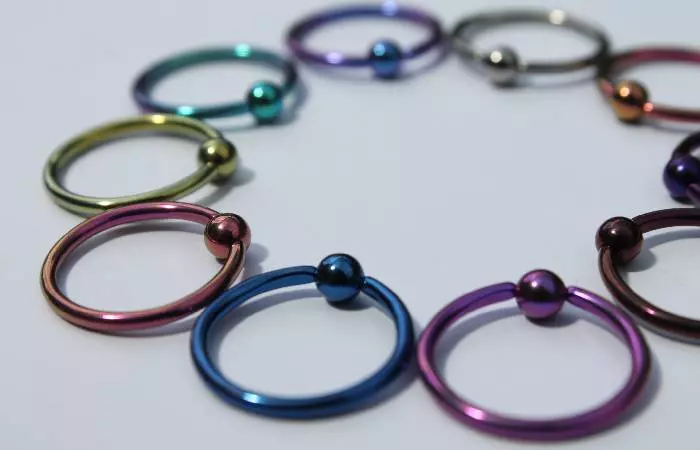
CBRs consist of a metal hoop with a removable bead or ball that encircles the earlobe or cartilage. They offer a classic and versatile look.
- Barbells

Barbells have a straight bar with a decorative front and closures on each end such as screw-on balls. They are ideal for cartilage and industrial piercings.
- Labrets

Labret studs feature a flat backplate and a decorative front. They are often used for tragus, helix, and conch piercings.
Tips To Choose The Right Material And Size
Material
Choose hypoallergenic materials such as surgical-grade stainless steel, titanium, niobium, or solid gold (7). This will minimize the risk of allergic reactions or infections. Avoid nickel or other cheap metals that can irritate the skin (5).
- Size
Select jewelry that is appropriate for your piercing type and anatomy. For initial piercings, your piercer will recommend the appropriate size to accommodate swelling and promote healing. For healed piercings, consider factors such as comfort, aesthetics, and the thickness of your earlobe or cartilage when choosing the size of your jewelry.
When And How To Change The Jewelry
It is essential to wait until your piercing is fully healed before changing the jewelry. As discussed earlier, healing times vary depending on the location of the piercing.
Process To Change The Jewelry
- Before changing your jewelry, wash your hands thoroughly with soap and water to reduce the risk of introducing bacteria into the piercing.
- You can also apply a small amount of water-based lubricant or antimicrobial soap on the jewelry to make the process smoother and more comfortable while unscrewing and removing it.
- Avoid forcing or tugging on the jewelry as this can cause irritation or injury to the piercing.
- Insert the new jewelry gently into the piercing hole, making sure it aligns properly and sits comfortably.
- Secure any closures or backings tightly to prevent the jewelry from coming loose.
- After changing your jewelry, monitor the piercing site for any signs of irritation, redness, swelling, or discharge. If you experience any discomfort or unusual symptoms, consult with your piercer or a healthcare professional.
By now, you are well-versed in selecting the right jewelry and when to change it. But you also need to be aware of another crucial aspect in the life of a piercing, that is, how long it takes for it to close. The next section answers that question.
How Long Does It Take For Ear Piercings To Close?
The time it takes for an ear piercing to close can vary depending on factors such as the location of the piercing, the length of time it has been created, and individual differences in healing.
- New piercings that have not fully healed may begin to close within a few hours to a few days if the jewelry is removed, while fully healed piercings may take longer.
- Earlobe piercings generally close more slowly than cartilage piercings, which can start to close within hours if left without jewelry. However, individual variation plays a significant role, and some people may find their piercings close more rapidly than others.
- In addition, larger gauge piercings may take longer to close than standard ear piercings.
It is important to note that even if a piercing appears closed on the surface, the hole may still exist underneath the skin, and scar tissue may form.
Infographic: Dos And Don’ts Of Ear Piercing Aftercare
Ear piercings are a popular form of self-expression for people across various cultures and demographics. While the experience and healing time may vary depending on factors such as the type of piercing and individual healing ability, proper aftercare is essential to ensure a safe and successful outcome. Whether you are getting your ears pierced for the first time or adding to your existing ones, it is important to choose a reputable piercer, follow aftercare instructions diligently, and listen to your body throughout the healing process. With patience and care, ear piercings can be a rewarding and enjoyable way to adorn yourself and showcase your personal style.
Frequently Asked Questions
Can I bring my own earrings for the piercing?
It is usually best to use the earrings provided by the piercing studio for the initial piercing. These earrings are often made of sterile materials and specifically designed for piercing. However, you may be able to bring your earrings for the piercing if they meet the studio’s safety standards.
Which ear is best for piercing?
There is no “best” ear for piercing. It is mainly a matter of personal preference.
Why do girls get ear piercings?
Girls (and people of all genders) may get their ears pierced for various reasons. For some, it is part of a cultural or religious tradition while, for others, it is a way to express personal style.
Who invented ear piercing?
Ear piercing has been practiced for thousands of years across various cultures worldwide. Its origins are ancient and not attributed to any single inventor or culture.
What not to eat after an ear piercing?
Avoid consuming spicy and acidic foods as they can irritate the sensitive skin around the piercing and cause swelling or discomfort.
Which month is best for ear piercing?
Ear piercing can be done at any time of the year. However, some people prefer to get pierced during the warmer months to avoid exposure to cold weather, which can slow down the healing process.
What are the scientific benefits of ear piercing?
Ear piercing may have therapeutic benefits and help with pain relief when used as an adjunct therapy. It is believed that some piercing points, such as helix, anti-tragus, conch, and shenmen, are acupuncture pressure points. Therefore, piercing these points may have similar effects and help relieve body and migraine pain (8). However, scientific research about these claims is still inconclusive, and individual experiences may vary.
What should I avoid after getting a piercing?
Avoid touching the piercing with unwashed hands, swimming in pools, and using harsh products on the area. Also, do not twist or play with the jewelry to ensure a smooth healing process. In case of infections and excessive bleeding or pain, contact a de
While ear piercing can be an exciting form of self-expression, it is crucial to be well-informed about potential risks before deciding. Check out this informative video to understand the potential risks associated with it.
Personal Experience: Source
StyleCraze's articles are interwoven with authentic personal narratives that provide depth and resonance to our content. Below are the sources of the personal accounts referenced in this article.
(i) 20 EAR PIERCINGS | Ear tour + rating pain & healing process | Sara Carstenshttps://www.youtube.com/watch?v=Un2KR5pIgHE
References
Articles on StyleCraze are backed by verified information from peer-reviewed and academic research papers, reputed organizations, research institutions, and medical associations to ensure accuracy and relevance. Read our editorial policy to learn more.
- Daith piercing in a case of chronic migraine: A possible vagal modulation
https://www.ncbi.nlm.nih.gov/pmc/articles/PMC5711775/ - Issues with piercing guns
https://safepiercing.org/piercing-guns/ - Suggested aftercare for body piercings
https://safepiercing.org/aftercare/ - Complications and hazards associated with body piercing: A narrative review
https://pubmed.ncbi.nlm.nih.gov/37916624/ - Immunological mechanisms of metal allergies and the nickel-specific tcr-pmhc interface
https://www.ncbi.nlm.nih.gov/pmc/articles/PMC8535423/ - Relationship between age of ear piercing and keloid formation
https://pubmed.ncbi.nlm.nih.gov/15867040/# - Jewelry for initial piercings
https://safepiercing.org/jewelry-for-initial-piercings/# - Does ear acupuncture have a role for pain relief in the emergency setting? A systematic review and meta-analysis
https://www.ncbi.nlm.nih.gov/pmc/articles/PMC5653340/
Read full bio of Anastasiia Gatsko
Read full bio of Manjari Uppal
Read full bio of Subhrojyoti Mukherjee
Read full bio of Aparna Harry







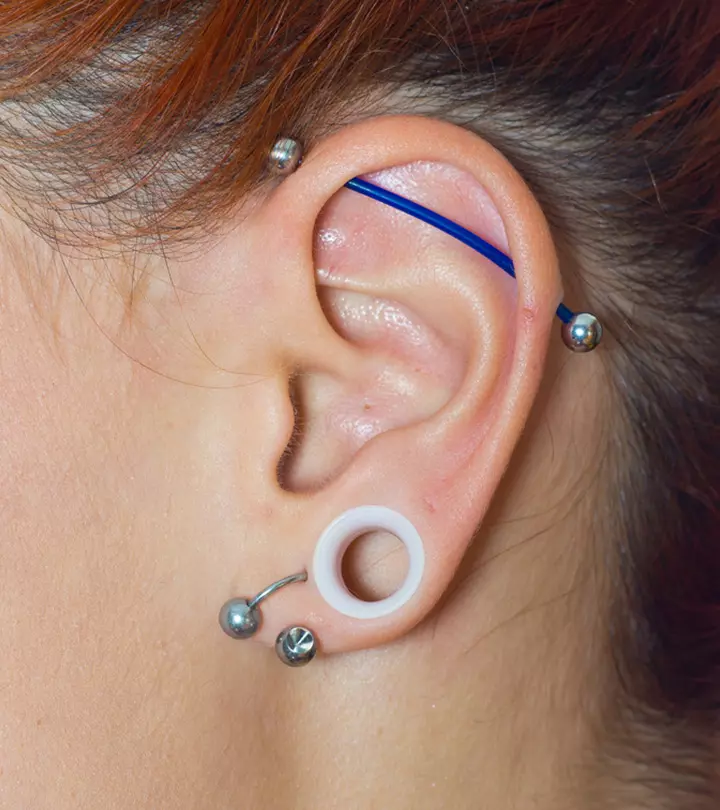
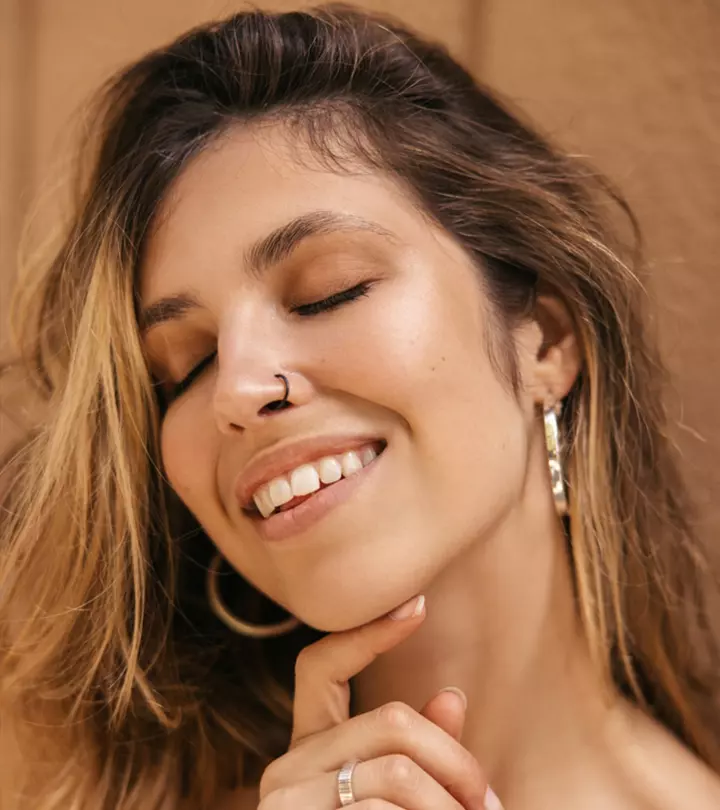
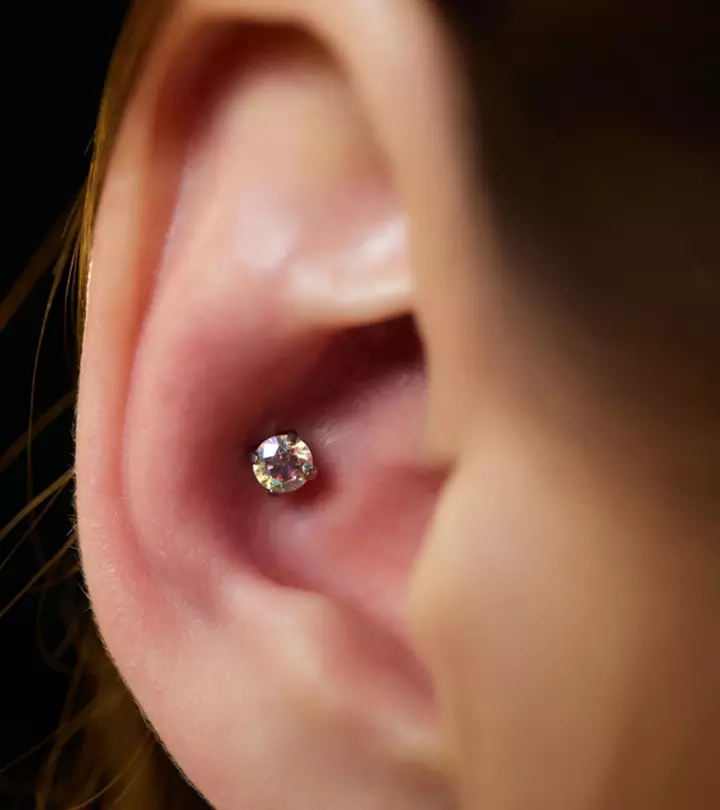

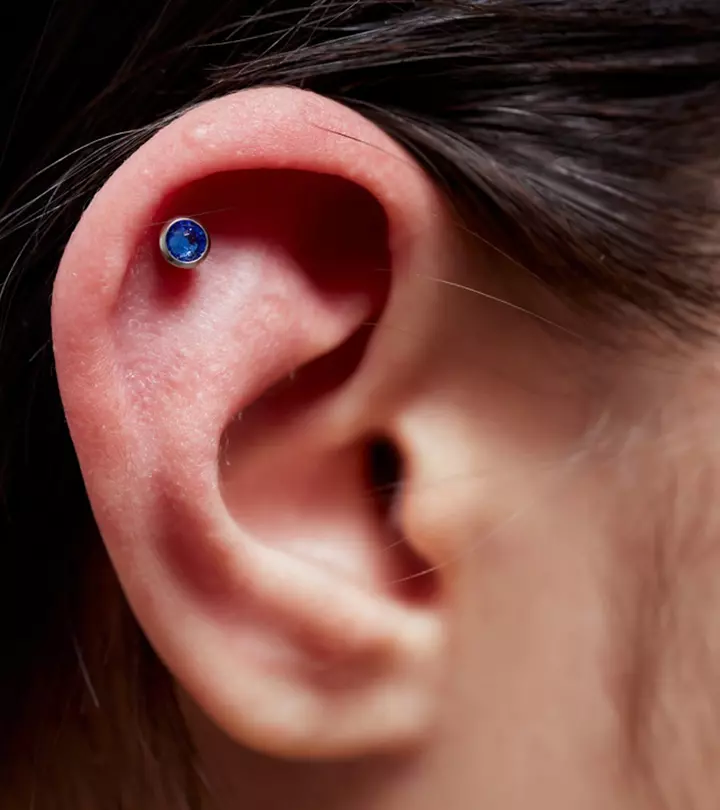

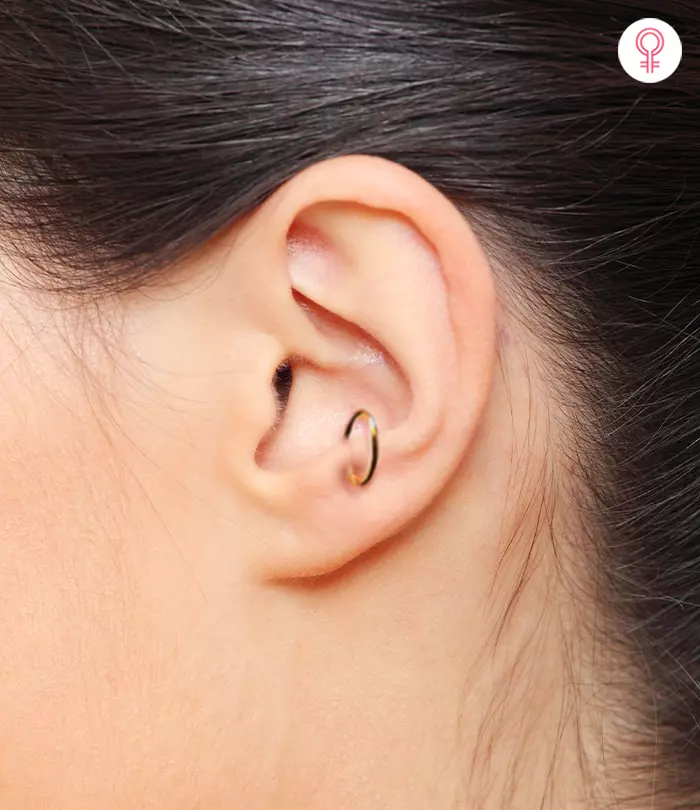


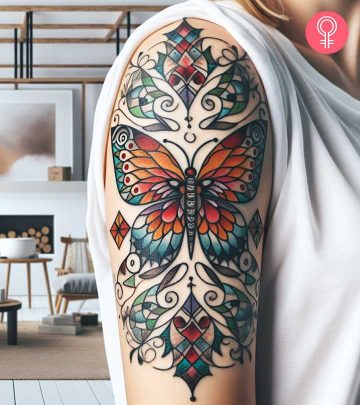

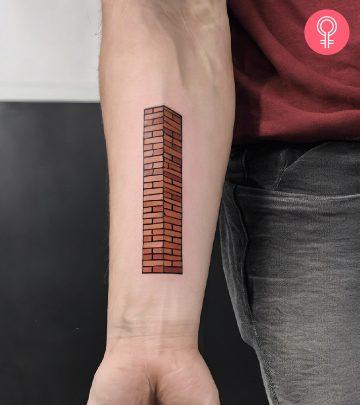
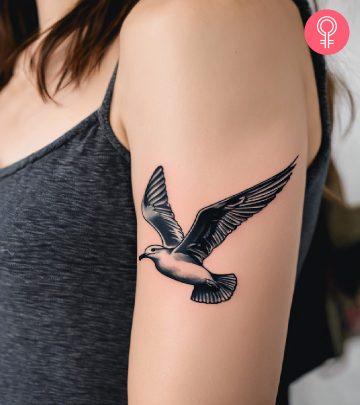

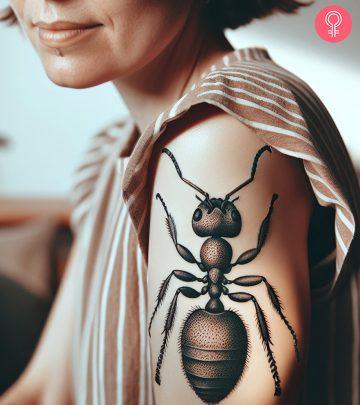

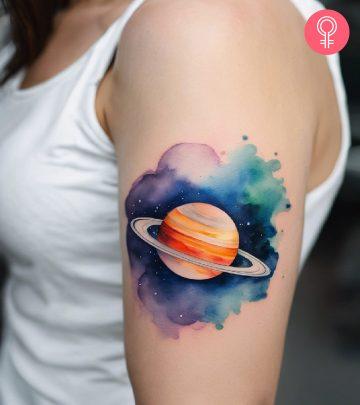
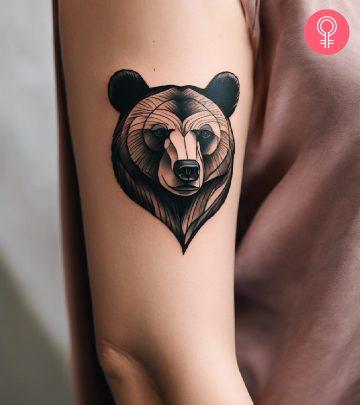


Community Experiences
Join the conversation and become a part of our empowering community! Share your stories, experiences, and insights to connect with other beauty, lifestyle, and health enthusiasts.